Nokia 2011 Annual Report Download - page 234
Download and view the complete annual report
Please find page 234 of the 2011 Nokia annual report below. You can navigate through the pages in the report by either clicking on the pages listed below, or by using the keyword search tool below to find specific information within the annual report.-
 1
1 -
 2
2 -
 3
3 -
 4
4 -
 5
5 -
 6
6 -
 7
7 -
 8
8 -
 9
9 -
 10
10 -
 11
11 -
 12
12 -
 13
13 -
 14
14 -
 15
15 -
 16
16 -
 17
17 -
 18
18 -
 19
19 -
 20
20 -
 21
21 -
 22
22 -
 23
23 -
 24
24 -
 25
25 -
 26
26 -
 27
27 -
 28
28 -
 29
29 -
 30
30 -
 31
31 -
 32
32 -
 33
33 -
 34
34 -
 35
35 -
 36
36 -
 37
37 -
 38
38 -
 39
39 -
 40
40 -
 41
41 -
 42
42 -
 43
43 -
 44
44 -
 45
45 -
 46
46 -
 47
47 -
 48
48 -
 49
49 -
 50
50 -
 51
51 -
 52
52 -
 53
53 -
 54
54 -
 55
55 -
 56
56 -
 57
57 -
 58
58 -
 59
59 -
 60
60 -
 61
61 -
 62
62 -
 63
63 -
 64
64 -
 65
65 -
 66
66 -
 67
67 -
 68
68 -
 69
69 -
 70
70 -
 71
71 -
 72
72 -
 73
73 -
 74
74 -
 75
75 -
 76
76 -
 77
77 -
 78
78 -
 79
79 -
 80
80 -
 81
81 -
 82
82 -
 83
83 -
 84
84 -
 85
85 -
 86
86 -
 87
87 -
 88
88 -
 89
89 -
 90
90 -
 91
91 -
 92
92 -
 93
93 -
 94
94 -
 95
95 -
 96
96 -
 97
97 -
 98
98 -
 99
99 -
 100
100 -
 101
101 -
 102
102 -
 103
103 -
 104
104 -
 105
105 -
 106
106 -
 107
107 -
 108
108 -
 109
109 -
 110
110 -
 111
111 -
 112
112 -
 113
113 -
 114
114 -
 115
115 -
 116
116 -
 117
117 -
 118
118 -
 119
119 -
 120
120 -
 121
121 -
 122
122 -
 123
123 -
 124
124 -
 125
125 -
 126
126 -
 127
127 -
 128
128 -
 129
129 -
 130
130 -
 131
131 -
 132
132 -
 133
133 -
 134
134 -
 135
135 -
 136
136 -
 137
137 -
 138
138 -
 139
139 -
 140
140 -
 141
141 -
 142
142 -
 143
143 -
 144
144 -
 145
145 -
 146
146 -
 147
147 -
 148
148 -
 149
149 -
 150
150 -
 151
151 -
 152
152 -
 153
153 -
 154
154 -
 155
155 -
 156
156 -
 157
157 -
 158
158 -
 159
159 -
 160
160 -
 161
161 -
 162
162 -
 163
163 -
 164
164 -
 165
165 -
 166
166 -
 167
167 -
 168
168 -
 169
169 -
 170
170 -
 171
171 -
 172
172 -
 173
173 -
 174
174 -
 175
175 -
 176
176 -
 177
177 -
 178
178 -
 179
179 -
 180
180 -
 181
181 -
 182
182 -
 183
183 -
 184
184 -
 185
185 -
 186
186 -
 187
187 -
 188
188 -
 189
189 -
 190
190 -
 191
191 -
 192
192 -
 193
193 -
 194
194 -
 195
195 -
 196
196 -
 197
197 -
 198
198 -
 199
199 -
 200
200 -
 201
201 -
 202
202 -
 203
203 -
 204
204 -
 205
205 -
 206
206 -
 207
207 -
 208
208 -
 209
209 -
 210
210 -
 211
211 -
 212
212 -
 213
213 -
 214
214 -
 215
215 -
 216
216 -
 217
217 -
 218
218 -
 219
219 -
 220
220 -
 221
221 -
 222
222 -
 223
223 -
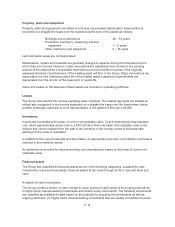 224
224 -
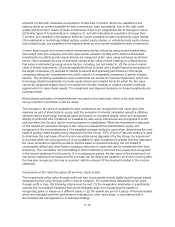 225
225 -
 226
226 -
 227
227 -
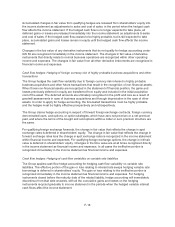 228
228 -
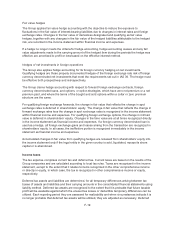 229
229 -
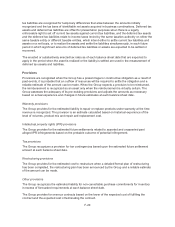 230
230 -
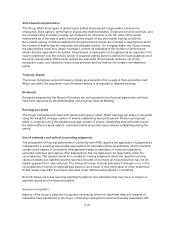 231
231 -
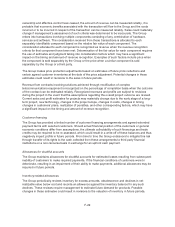 232
232 -
 233
233 -
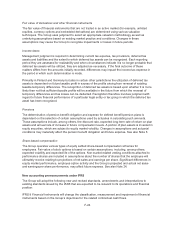 234
234 -
 235
235 -
 236
236 -
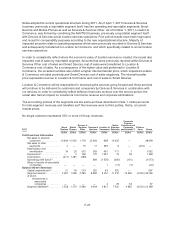 237
237 -
 238
238 -
 239
239 -
 240
240 -
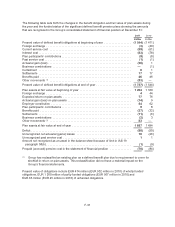 241
241 -
 242
242 -
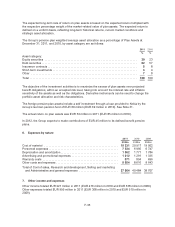 243
243 -
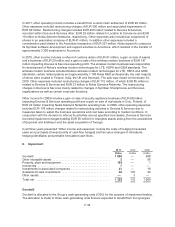 244
244 -
 245
245 -
 246
246 -
 247
247 -
 248
248 -
 249
249 -
 250
250 -
 251
251 -
 252
252 -
 253
253 -
 254
254 -
 255
255 -
 256
256 -
 257
257 -
 258
258 -
 259
259 -
 260
260 -
 261
261 -
 262
262 -
 263
263 -
 264
264 -
 265
265 -
 266
266 -
 267
267 -
 268
268 -
 269
269 -
 270
270 -
 271
271 -
 272
272 -
 273
273 -
 274
274 -
 275
275 -
 276
276 -
 277
277 -
 278
278 -
 279
279 -
 280
280 -
 281
281 -
 282
282 -
 283
283 -
 284
284 -
 285
285 -
 286
286 -
 287
287 -
 288
288 -
 289
289 -
 290
290 -
 291
291 -
 292
292 -
 293
293 -
 294
294 -
 295
295 -
 296
296
 |
 |
Fair value of derivatives and other financial instruments
The fair value of financial instruments that are not traded in an active market (for example, unlisted
equities, currency options and embedded derivatives) are determined using various valuation
techniques. The Group uses judgment to select an appropriate valuation methodology as well as
underlying assumptions based on existing market practice and conditions. Changes in these
assumptions may cause the Group to recognize impairments or losses in future periods.
Income taxes
Management judgment is required in determining current tax expense, tax provisions, deferred tax
assets and liabilities and the extent to which deferred tax assets can be recognized. Each reporting
period they are assessed for realizability and when circumstances indicate it is no longer probable that
deferred tax assets will be utilized, they are adjusted as necessary. If the final outcome of these
matters differs from the amounts initially recorded, differences may impact the income tax expense in
the period in which such determination is made.
Primarily in Finland and Germany but also in certain other jurisdictions the utilization of deferred tax
assets is dependent on future taxable profit in excess of the profits arising from reversal of existing
taxable temporary differences. The recognition of deferred tax assets is based upon whether it is more
likely than not that sufficient taxable profits will be available in the future from which the reversal of
temporary differences and tax losses can be deducted. Recognition therefore involves judgment with
regard to future financial performance of a particular legal entity or tax group in which the deferred tax
asset has been recognized.
Pensions
The determination of pension benefit obligation and expense for defined benefit pension plans is
dependent on the selection of certain assumptions used by actuaries in calculating such amounts.
Those assumptions include, among others, the discount rate, expected long-term rate of return on plan
assets and annual rate of increase in future compensation levels. A portion of plan assets is invested in
equity securities, which are subject to equity market volatility. Changes in assumptions and actuarial
conditions may materially affect the pension benefit obligation and future expense. See also Note 5.
Share-based compensation
The Group operates various types of equity settled share-based compensation schemes for
employees. Fair value of stock options is based on certain assumptions, including, among others,
expected volatility and expected life of the options. Non market related vesting conditions attached to
performance shares are included in assumptions about the number of shares that the employee will
ultimately receive relating to projections of net sales and earnings per share. Significant differences in
equity market performance, employee option activity and the Group’s projected and actual net sales
and earnings per share performance, may affect future expense. See also Note 24.
New accounting pronouncements under IFRS
The Group will adopt the following new and revised standards, amendments and interpretations to
existing standards issued by the IASB that are expected to be relevant to its operations and financial
position:
IFRS 9 Financial Instruments will change the classification, measurement and impairment of financial
instruments based on the Group’s objectives for the related contractual cash flows.
F-24
